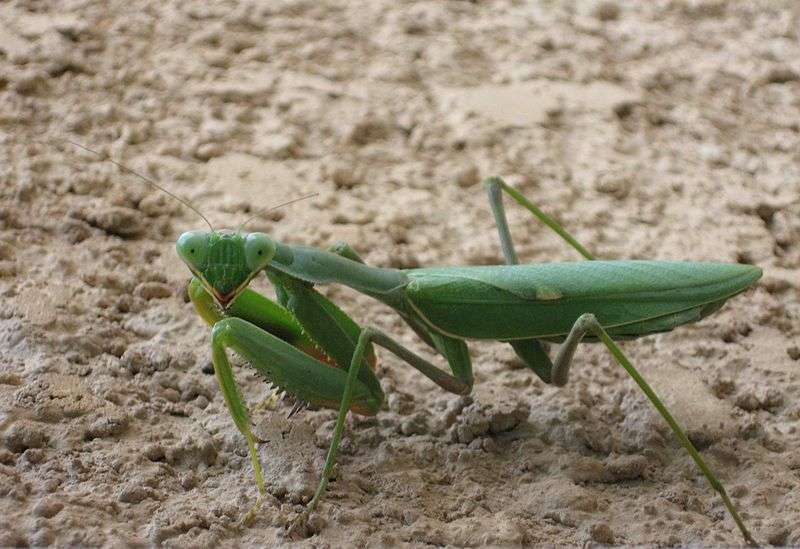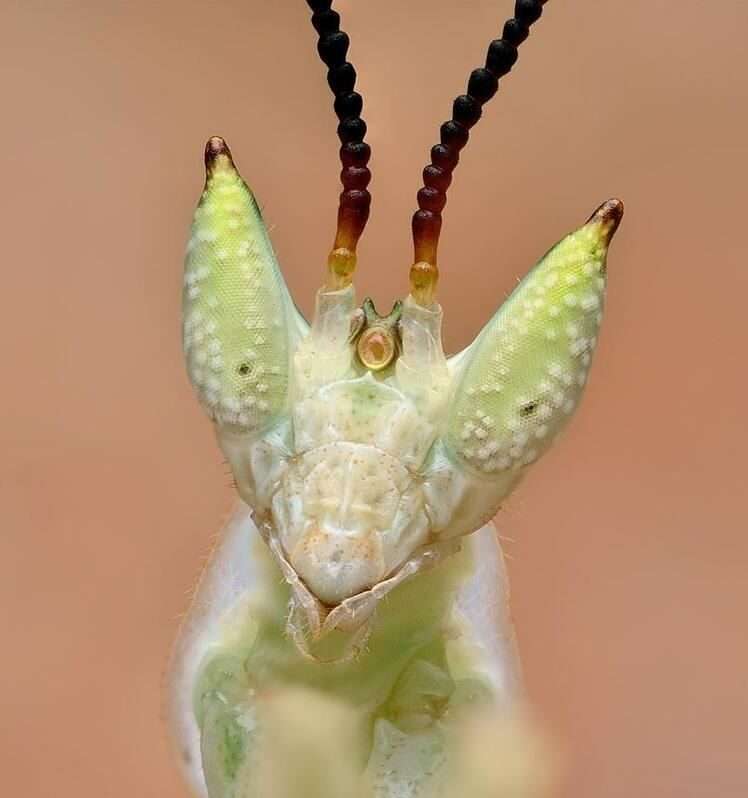
Description
Scientific Name: Tenodera sinensis
Lifespan: 6-9 months
Chinese mantises typically have tan bodies and a green line along the side of the forewings. The mantis can track prey without moving by using its triangular, swiveling head. Examine the facial shield (the area of the face between the eyes and the antennae), which is relatively square and striped vertically in the Chinese mantis.
Mantis in their immature stages resemble adults in appearance but lack fully formed wings. The abdomen tip of very young mantis frequently curves upward.
Eggshells resemble toasted marshmallows in colour. They resemble ping-pong balls in size, are quite rounded, and are typically attached to bush and small tree twigs.
Habitat
China, Japan, the Korean Peninsula, Micronesia, and Thailand are the native habitats of this mantis. In addition to grasslands, pastures, agricultural areas, and other open spaces, people frequently observe them in or close to the vegetation around buildings.
Behavior
A Chinese mantis is typically rather quiet and docile. If it eats sufficiently, it won’t move around much. If you keep it as a pet, it will follow a prey around its cage. Although it is not a hostile praying mantis, it has the ability to defend itself if confronted. Chinese mantis are fierce, lone hunters, and numerous studies have looked into their intricate hunting strategies.
Keeping as a Pet/ In Captivity

Housing
Tenodera sinensis, often known as the Chinese Mantis, should be housed in an enclosure that is at least three times as tall as it is long and at least twice as broad. When selecting whether or not to adopt this species, you should keep in mind that Chinese mantises are among the largest of the mantis species that are maintained as pets. Chinese mantises have a maximum adult length of over 4 inches. An empty area at the top of the cage that is at least twice the size of the mantis is required, as well as appropriate ventilation and a substance on the roof that will allow the mantis to hang upside down while molting. Chinese mantises can be effectively maintained in a vivarium that includes living plants and microfauna (such as springtails and isopods) that will work as a type of “clean up crew” by dissecting the mantis’s waste.
They can also be housed in a short-term enclosure like a mesh or screen cage with silk plants (such an ivy branch, leafy branch, orchid flower, or white flower) and an easily disposed of substrate like sphagnum moss, or even simply a paper towel that you can replace once a week.
Temperature & Humidity
Chinese mantises can survive a wide variety of humidity and temperature, but they prefer conditions that are drier and more similar to room temperature. They ought to thrive at temperatures between 70°F and 85°F. The ideal relative humidity (RH) range for a space is 50% to 60%.
At least once every day, you should lightly water the enclosure to allow your mantis to drink. We spray the enclosure twice daily when keeping animals in mesh cages. The majority of mantises dislike being sprayed directly, therefore it is recommended to avoid doing so; nevertheless, if you accidentally spray them a bit, it usually doesn’t cause any harm. Use spring water, distilled water, or reverse osmosis (RO)-filtered water instead of regular tap water.
Feeding
Chinese mantises can consume a wide range of animals. These mantises are excellent candidates for larger prey, such as adult crickets and cockroaches, as they are.
Nymphs in the L1–L3 stage: Give D. hydei fruit flies as food.
Nymphs in stages L4 and L5 should be fed either houseflies or blue bottle flies.
L6 nymph to adult: Blue bottle flies should be a mainstay of the diet. They are also capable of handling some larger prey, such cockroaches.
Table





